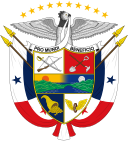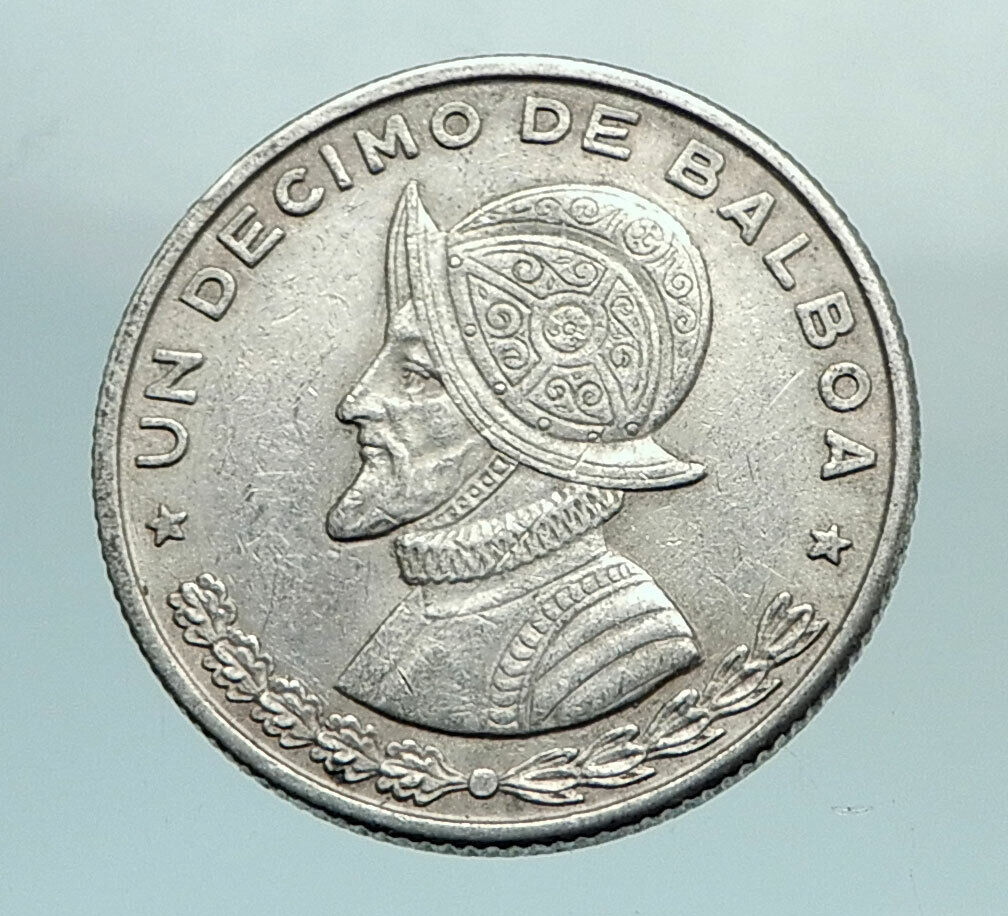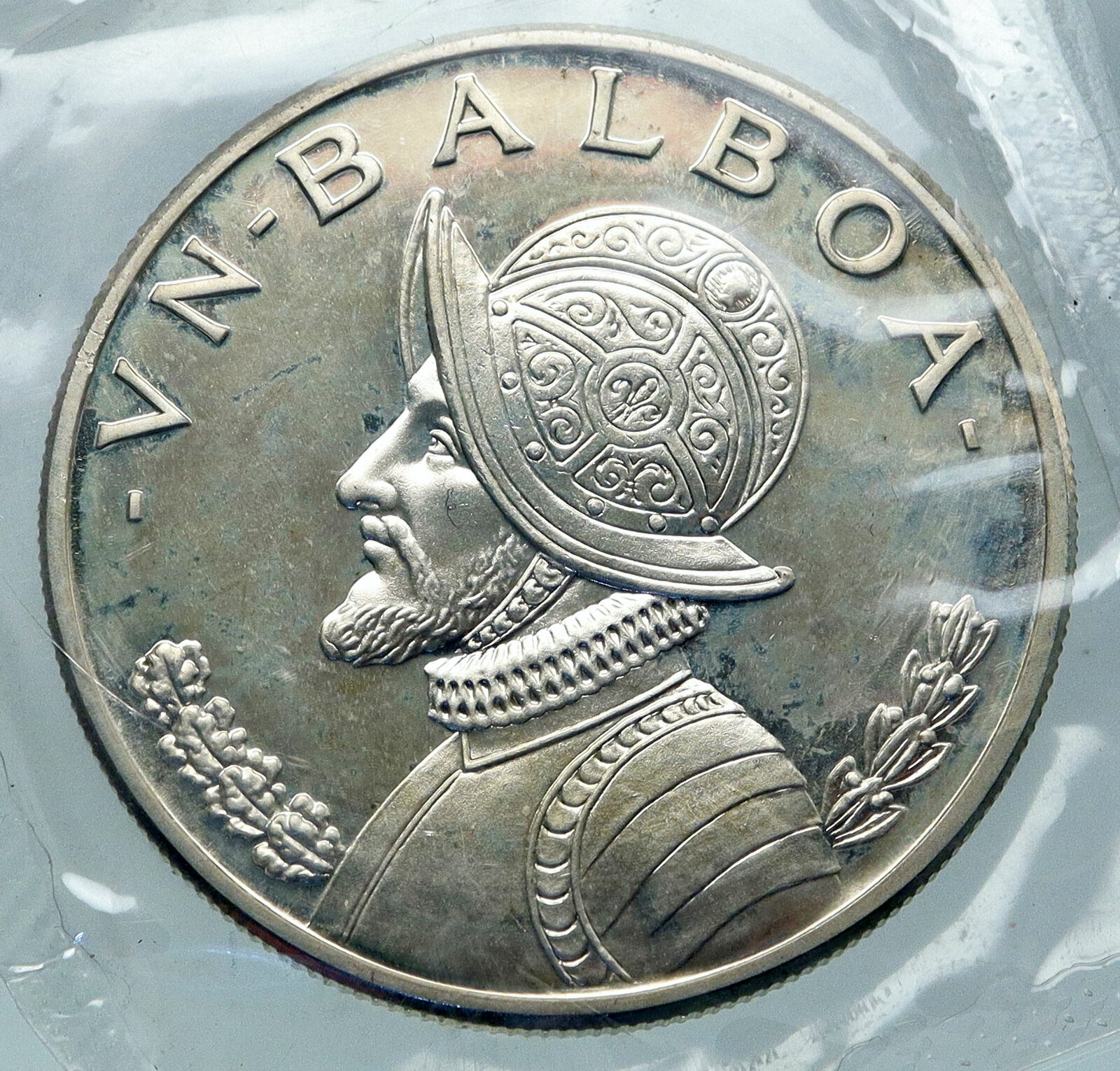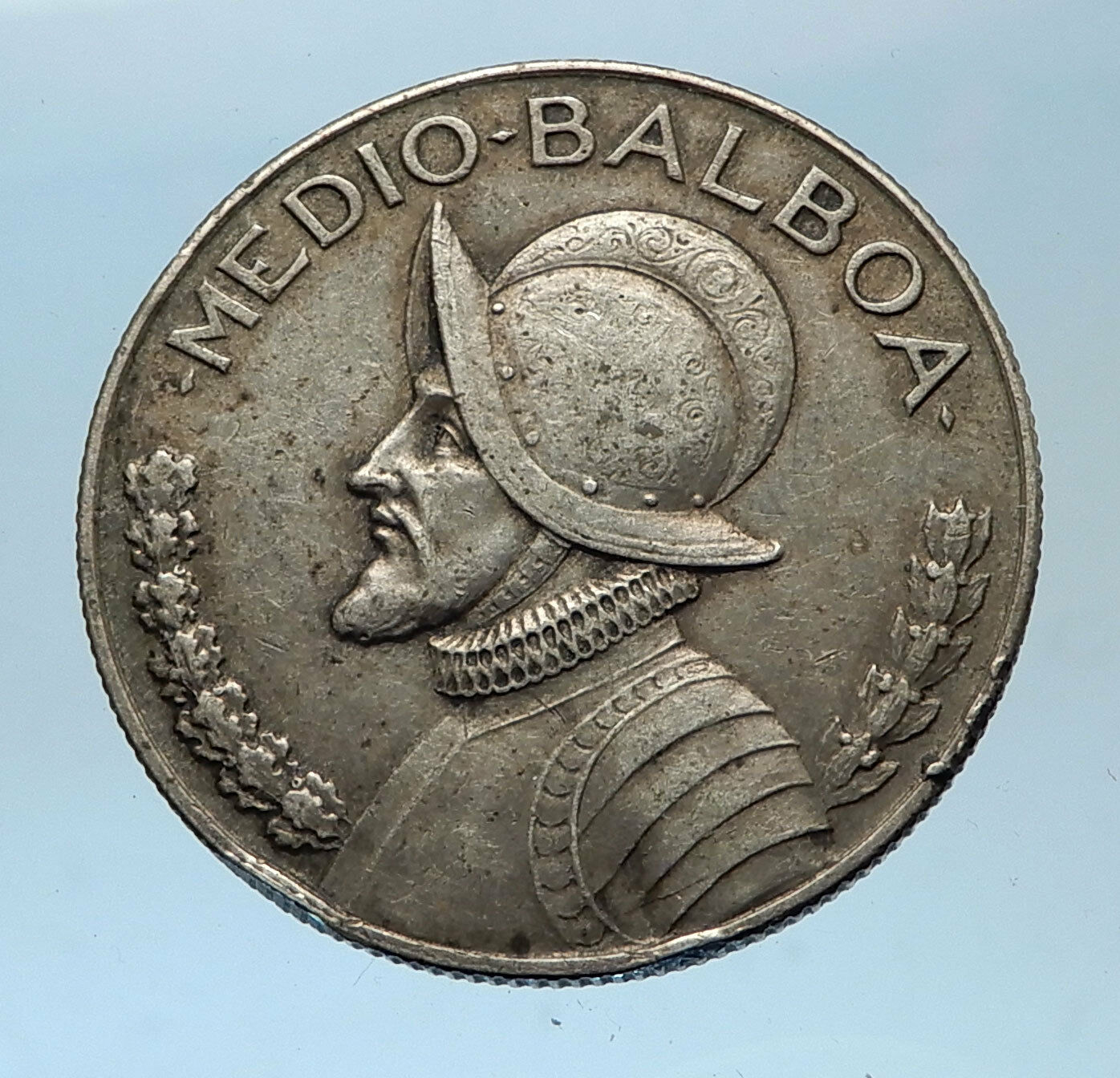|
Panama
Panama Canal Treaty Implementation
1979 Proof Silver 5 Balboa 39mm (35.12 grams) 0.925 Silver (1.0444 oz. ASW)
Reference: KM# 58
· · REPUBLICA DE PANAMA · · ********* PRO MUND, BENEFICIO LEY 0.925 FM 5 BALBOAS, Coat-of-Arms of Panama below nine stars.
EJECUCİÓN DE LOS TRATADOS DEL CANAL DE PANAMÁ, TRATADOS TORRIJOS CARTER 1979, Flag over the map of Panama.
You are bidding on the exact item pictured, provided with a Certificate of Authenticity and Lifetime Guarantee of Authenticity.
 The Torrijos–Carter Treaties (Spanish: Tratados Torrijos-Carter) are two treaties signed by the United States and Panama in Washington, D.C. on September 7, 1977, which superseded the Hay–Bunau-Varilla Treaty of 1903. The treaties guaranteed that Panama would gain control of the Panama Canal after 1999, ending the control of the canal that the U.S. had exercised since 1903. The treaties are named after the two signatories, U.S. president Jimmy Carter and the Commander of Panama’s National Guard, General Omar Torrijos. The Torrijos–Carter Treaties (Spanish: Tratados Torrijos-Carter) are two treaties signed by the United States and Panama in Washington, D.C. on September 7, 1977, which superseded the Hay–Bunau-Varilla Treaty of 1903. The treaties guaranteed that Panama would gain control of the Panama Canal after 1999, ending the control of the canal that the U.S. had exercised since 1903. The treaties are named after the two signatories, U.S. president Jimmy Carter and the Commander of Panama’s National Guard, General Omar Torrijos.
This first treaty is officially titled The Treaty Concerning the Permanent Neutrality and Operation of the Panama Canal (Spanish: Tratado Concerniente a la Neutralidad Permanente y Funcionamiento del Canal de Panamá) and is commonly known as the “Neutrality Treaty”. Under this treaty, the U.S. retained the permanent right to defend the canal from any threat that might interfere with its continued neutral service to ships of all nations. The second treaty is titled The Panama Canal Treaty (Tratado del Canal de Panamá), and provided that as from 12:00 on December 31, 1999, Panama would assume full control of canal operations and become primarily responsible for its defense.
 Panama, officially the Republic of Panama, is the southernmost country of Central America and the whole of North America. Panama, officially the Republic of Panama, is the southernmost country of Central America and the whole of North America.
Situated on the isthmus connecting North and South America, it is bordered by Costa Rica to the west, Colombia to the southeast, the Caribbean to the north and the Pacific Ocean to the south. The capital and largest city is Panama City, whose metro area is home to nearly half of the country’s 3.6 million people.
 Panama was inhabited by several indigenous tribes prior to settlement by the Spanish in the 16th century. It broke with Spain in 1821 and joined a union of Nueva Granada, Ecuador, and Venezuela named the Republic of Gran Colombia. When Gran Colombia dissolved in 1831, Panama and Nueva Granada remained joined, eventually becoming the Republic of Colombia. With the backing of the United States, Panama seceded from Colombia in 1903, allowing the Panama Canal to be built by the U.S. Army Corps of Engineers between 1904 and 1914. In 1977, an agreement was signed for the total transfer of the Canal from the United States to Panama by the end of the 20th century, which culminated on 31 December 1999. Panama was inhabited by several indigenous tribes prior to settlement by the Spanish in the 16th century. It broke with Spain in 1821 and joined a union of Nueva Granada, Ecuador, and Venezuela named the Republic of Gran Colombia. When Gran Colombia dissolved in 1831, Panama and Nueva Granada remained joined, eventually becoming the Republic of Colombia. With the backing of the United States, Panama seceded from Colombia in 1903, allowing the Panama Canal to be built by the U.S. Army Corps of Engineers between 1904 and 1914. In 1977, an agreement was signed for the total transfer of the Canal from the United States to Panama by the end of the 20th century, which culminated on 31 December 1999.
.svg/375px-Panama_(orthographic_projection).svg.png) Revenue from canal tolls continues to represent a significant portion of Panama’s GDP, although commerce, banking, and tourism are major and growing sectors. Panama has the second largest economy in Central America and it is also the fastest growing economy and the largest per capita consumer in Central America. In 2013, Panama ranked 5th among Latin American countries in terms of the Human Development Index, and 59th in the world. Since 2010, Panama remains the second most competitive economy in Latin America, according to the World Economic Forum’s Global Competitiveness Index. Covering around 40 percent of its land area, Panama’s jungles are home to an abundance of tropical plants, animals and birds – some of them to be found nowhere else in the world. Revenue from canal tolls continues to represent a significant portion of Panama’s GDP, although commerce, banking, and tourism are major and growing sectors. Panama has the second largest economy in Central America and it is also the fastest growing economy and the largest per capita consumer in Central America. In 2013, Panama ranked 5th among Latin American countries in terms of the Human Development Index, and 59th in the world. Since 2010, Panama remains the second most competitive economy in Latin America, according to the World Economic Forum’s Global Competitiveness Index. Covering around 40 percent of its land area, Panama’s jungles are home to an abundance of tropical plants, animals and birds – some of them to be found nowhere else in the world.
|





 The Torrijos–Carter Treaties (Spanish: Tratados Torrijos-Carter) are two treaties signed by the United States and Panama in Washington, D.C. on September 7, 1977, which superseded the Hay–Bunau-Varilla Treaty of 1903. The treaties guaranteed that Panama would gain control of the Panama Canal after 1999, ending the control of the canal that the U.S. had exercised since 1903. The treaties are named after the two signatories, U.S. president Jimmy Carter and the Commander of Panama’s National Guard, General Omar Torrijos.
The Torrijos–Carter Treaties (Spanish: Tratados Torrijos-Carter) are two treaties signed by the United States and Panama in Washington, D.C. on September 7, 1977, which superseded the Hay–Bunau-Varilla Treaty of 1903. The treaties guaranteed that Panama would gain control of the Panama Canal after 1999, ending the control of the canal that the U.S. had exercised since 1903. The treaties are named after the two signatories, U.S. president Jimmy Carter and the Commander of Panama’s National Guard, General Omar Torrijos. Panama, officially the Republic of Panama, is the southernmost country of Central America and the whole of North America.
Panama, officially the Republic of Panama, is the southernmost country of Central America and the whole of North America. Panama was inhabited by several indigenous tribes prior to settlement by the Spanish in the 16th century. It broke with Spain in 1821 and joined a union of Nueva Granada, Ecuador, and Venezuela named the Republic of Gran Colombia. When Gran Colombia dissolved in 1831, Panama and Nueva Granada remained joined, eventually becoming the Republic of Colombia. With the backing of the United States, Panama seceded from Colombia in 1903, allowing the Panama Canal to be built by the U.S. Army Corps of Engineers between 1904 and 1914. In 1977, an agreement was signed for the total transfer of the Canal from the United States to Panama by the end of the 20th century, which culminated on 31 December 1999.
Panama was inhabited by several indigenous tribes prior to settlement by the Spanish in the 16th century. It broke with Spain in 1821 and joined a union of Nueva Granada, Ecuador, and Venezuela named the Republic of Gran Colombia. When Gran Colombia dissolved in 1831, Panama and Nueva Granada remained joined, eventually becoming the Republic of Colombia. With the backing of the United States, Panama seceded from Colombia in 1903, allowing the Panama Canal to be built by the U.S. Army Corps of Engineers between 1904 and 1914. In 1977, an agreement was signed for the total transfer of the Canal from the United States to Panama by the end of the 20th century, which culminated on 31 December 1999..svg/375px-Panama_(orthographic_projection).svg.png) Revenue from canal tolls continues to represent a significant portion of Panama’s GDP, although commerce, banking, and tourism are major and growing sectors. Panama has the second largest economy in Central America and it is also the fastest growing economy and the largest per capita consumer in Central America. In 2013, Panama ranked 5th among Latin American countries in terms of the Human Development Index, and 59th in the world. Since 2010, Panama remains the second most competitive economy in Latin America, according to the World Economic Forum’s Global Competitiveness Index. Covering around 40 percent of its land area, Panama’s jungles are home to an abundance of tropical plants, animals and birds – some of them to be found nowhere else in the world.
Revenue from canal tolls continues to represent a significant portion of Panama’s GDP, although commerce, banking, and tourism are major and growing sectors. Panama has the second largest economy in Central America and it is also the fastest growing economy and the largest per capita consumer in Central America. In 2013, Panama ranked 5th among Latin American countries in terms of the Human Development Index, and 59th in the world. Since 2010, Panama remains the second most competitive economy in Latin America, according to the World Economic Forum’s Global Competitiveness Index. Covering around 40 percent of its land area, Panama’s jungles are home to an abundance of tropical plants, animals and birds – some of them to be found nowhere else in the world.




